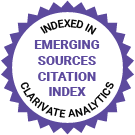JMIR Research Protocols
Protocols, grant proposals, registered reports (RR1)
Editor-in-Chief:
Amy Schwartz, MSc, Ph.D., Scientific Editor at JMIR Publications, Ontario, Canada
Impact Factor 1.4 CiteScore 2.4
Recent Articles

Older cancer survivors face age- and treatment-related comorbidities, including physical functional impairment, which are exacerbated by physical inactivity and sedentary behavior. Regular physical activity can reduce this risk, yet less than 30% of older cancer survivors meet the recommended guidelines for physical activity.

Suicide remains a leading cause of death among veterans in the United States, and mild traumatic brain injury (mTBI) increases the risk of suicidal ideation (SI) and suicide attempts (SAs). mTBI worsens impulsivity and contributes to poor social and occupational functioning, which further increases the risk of SI and SAs. Repetitive transcranial magnetic stimulation is a neuromodulatory treatment approach that induces neuroplasticity, potentially repairing neurodamage. Intermittent theta burst stimulation (iTBS) is a second-generation form of transcranial magnetic stimulation that is safe, shorter in duration, displays a minimal side effect profile and is a promising treatment approach for impulsivity in mTBI. Our novel proposed treatment protocol uses frontal pole iTBS to target the ventromedial prefrontal cortex, which may reduce impulsivity by strengthening functional connectivity between the limbic system and frontal cortex, allowing for improved top-down control of impulsive reactions, including SI and SAs.

International health care students encounter unique hurdles as they pursue education in foreign countries. These challenges, stemming from adjustment to new cultural environments and stressful academic programs, significantly impact their well-being. Understanding the barriers and facilitators experienced by international health care students is crucial for ensuring their successful integration into academic and professional spheres. Most existing reviews focus on specific populations or disciplines, thus limiting their generalizability.

Medical students are frequently affected by poor sleep quality. Since poor sleep quality has negative physiological and psychological consequences such as on executive function, there is an opportunity to improve sleep quality and executive functions using non-pharmacological intervention such as cognitive behavioural therapy.

People living in prisons often experience poor oral health, which could be attributed to their limited access to (dental) care, financial constraints, and a general lack of awareness and prioritization toward their oral hygiene. A pilot study involving motivational interviewing (MI) has shown promising results for improving the oral health outcomes of people living in prisons.

Tobacco smoking remains the leading preventable cause of death and disease among women. Quitting smoking offers numerous health benefits; however, women tend to have less success than men when attempting to quit. This discrepancy is partly due to sex- and gender-related factors, including the lower effectiveness of smoking cessation medication and the presence of unique motives for smoking and barriers to quitting among women. Despite the gendered nature of smoking, most smoking cessation apps are gender-neutral and fail to address women’s specific needs.

Mental disorders are complex diseases that affect 28% (about 17.8 million people) of the adult population in Germany annually. Since 2020, certain mobile health (mHealth) apps, so-called digital health applications (DiGA), are reimbursable in the German statutory health insurance system. A total of 27 of the 56 currently available DiGA are approved for the treatment of mental and behavioral diseases. An indicator of existing problems hindering the use of DiGA is the rather hesitant prescribing behavior.

Nontraumatic painful upper-extremity conditions (NPUCs) are largely age-related degenerations that affect the majority of adults. Most patients with NPUCs do not seek medical care and adjust on their own. Among those who do seek care, approximately 20% report risky substance use, defined as a consumption pattern that increases the risk of harm to physical or psychosocial health. In the context of NPUC, risky substance use is associated with more intense pain, emotional distress, disability, and opioid or other substance misuse (ie, cross-tolerance). Consequently, risky substance use is a significant modifiable risk factor for the progression and maintenance of chronic pain-related disability and comorbid psychopathology among patients with NPUCs.

A significant proportion of individuals with disabilities in resource-limited countries require at least 1 assistive technology (AT) device to enhance their functioning and autonomy. However, there is limited evidence regarding the actual needs of AT users in these regions concerning the adequacy of ATs.

Retaining specialist physicians in rural parts of India poses a fundamental challenge, which affects the health care system’s functionality and provision of standard health care services. There has been an acute shortfall of specialist physicians in the fields of medicine, pediatrics, obstetrics and gynecology, and surgery at rural community health centers. This necessitates urgent policy focus to address the shortages and design effective rural retention strategies. In this study, which uses a discrete choice experiment (DCE), individuals choose from multiple-choice preferences that resemble hypothetical job descriptions.

Domestic violence is one of the most significant global public health priorities. This social problem could be accelerated by global catastrophes such as the COVID-19 pandemic. The structural changes due to the imposition of health measures, combined with personal and social problems, may worsen the situation.

Interprofessional education (IPE) is an approach that can improve health care quality, contribute to the qualification of health care professionals, and train undergraduate students. Although this strategy has made significant progress in the last decade, integration, sustainability, and institutional growth are still priorities worldwide. Thus, maintaining strategies is essential for their full development and evolution.
Preprints Open for Peer-Review
Open Peer Review Period:
-
Open Peer Review Period:
-













